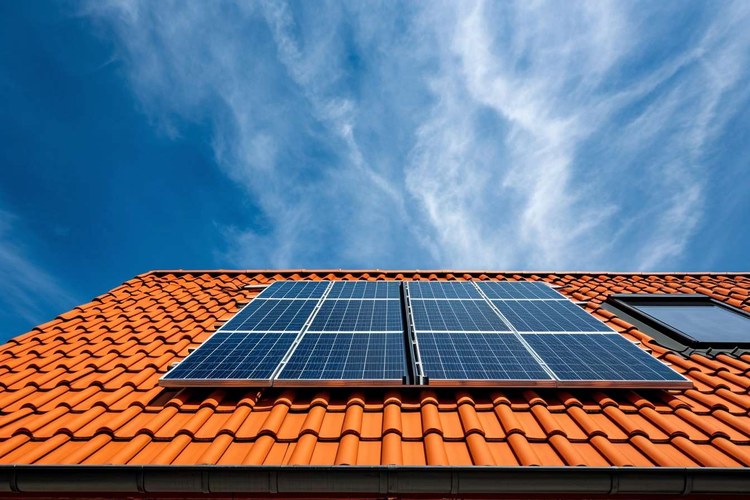Overview of Solar Energy Systems for Homes and Businesses in the UK
Solar energy continues to play a growing role in the UK's shift toward cleaner and more sustainable energy sources. Technological advancements and increasing awareness of environmental issues have led to a rise in interest across both residential and commercial sectors. This article provides a general overview of how solar systems are being adopted in the UK, and how they are used in different types of properties.

What are the key components of a solar energy system?
A typical solar energy system consists of several essential components working together to harness and convert solar power into usable electricity. The primary elements include:
-
Solar panels: These photovoltaic (PV) modules capture sunlight and convert it into direct current (DC) electricity.
-
Inverter: This device converts the DC electricity produced by the solar panels into alternating current (AC) electricity, which is used in homes and businesses.
-
Mounting system: Securely attaches the solar panels to the roof or ground, ensuring optimal positioning for maximum sun exposure.
-
Batteries (optional): Some systems include battery storage to store excess energy for use during non-sunlight hours or as backup power.
-
Monitoring system: Allows users to track energy production and consumption in real-time.
Understanding these components is crucial for both residential and commercial property owners considering solar energy adoption.
How are solar systems used in residential settings in the UK?
Residential use of solar energy has seen significant growth in the UK over the past decade. Homeowners are increasingly turning to solar power as a means to reduce their carbon footprint and lower electricity bills. Common applications include:
-
Rooftop solar panel installations: The most popular option for UK homes, where panels are mounted on south-facing roofs to maximize sun exposure.
-
Solar water heating systems: Using solar thermal collectors to heat water for domestic use.
-
Solar-powered outdoor lighting: Utilizing small solar panels to charge batteries that power garden lights and security systems.
-
Integration with home energy management systems: Combining solar power with smart home technology to optimize energy usage and efficiency.
Many UK homeowners also benefit from the Smart Export Guarantee (SEG) scheme, which allows them to sell excess electricity back to the grid, further incentivizing solar adoption.
What are the applications of solar energy in commercial settings?
Solar applications in commercial settings are diverse and often more extensive than residential installations. UK businesses are increasingly recognizing the potential of solar energy to reduce operating costs and meet sustainability goals. Some common commercial applications include:
-
Large-scale rooftop installations: Utilizing vast roof spaces of warehouses, factories, and office buildings to generate significant amounts of electricity.
-
Solar carports: Combining parking structures with solar panels to provide shade and generate power simultaneously.
-
Ground-mounted solar farms: Developing large areas of land for extensive solar energy production.
-
Building-integrated photovoltaics (BIPV): Incorporating solar technology directly into building materials, such as solar tiles or solar glass facades.
-
Solar-powered electric vehicle charging stations: Supporting the transition to electric vehicles by providing clean energy charging options.
These applications demonstrate the versatility of solar energy in meeting diverse commercial energy needs while contributing to corporate social responsibility initiatives.
What are the key design and implementation considerations for solar systems?
When planning a solar energy system for either residential or commercial use, several crucial factors must be considered:
-
Site assessment: Evaluating the property’s solar potential, including roof orientation, shading, and structural integrity.
-
System sizing: Determining the appropriate size of the solar array based on energy consumption patterns and available space.
-
Grid connection requirements: Ensuring compliance with local regulations and utility company specifications for grid-tied systems.
-
Planning permissions: Obtaining necessary approvals from local authorities, especially for larger commercial installations or in conservation areas.
-
Installation quality: Selecting certified installers and high-quality components to ensure system longevity and performance.
-
Maintenance planning: Establishing a regular maintenance schedule to keep the system operating at peak efficiency.
Careful consideration of these factors is essential for maximizing the benefits of solar energy systems in both residential and commercial contexts.
What are the financial implications of installing solar systems in the UK?
The financial aspects of solar system installation are a crucial consideration for both homeowners and businesses. While the initial investment can be significant, long-term savings and potential income generation make solar energy an attractive option for many.
| System Type | Typical Size | Estimated Cost Range | Potential Annual Savings |
|---|---|---|---|
| Residential | 3-4 kW | £4,000 - £6,000 | £270 - £440 |
| Commercial | 30-50 kW | £25,000 - £50,000 | £3,000 - £5,000 |
| Solar Farm | 1-5 MW | £600,000 - £3,000,000 | £70,000 - £350,000 |
Prices, rates, or cost estimates mentioned in this article are based on the latest available information but may change over time. Independent research is advised before making financial decisions.
Factors affecting costs include system size, quality of components, installation complexity, and location. Government incentives, such as the Smart Export Guarantee, can help offset initial costs and provide ongoing financial benefits.
How does the future look for solar energy adoption in the UK?
The outlook for solar energy adoption in the UK is promising, driven by several factors:
-
Decreasing technology costs: Continued reductions in solar panel and battery storage prices are making systems more accessible.
-
Government policies: Ongoing support through initiatives like the SEG and potential future incentives encourage adoption.
-
Increasing energy prices: Rising conventional energy costs make solar more attractive as a long-term investment.
-
Growing environmental awareness: Both individuals and businesses are prioritizing sustainable energy solutions.
-
Technological advancements: Improvements in efficiency and integration with smart home/building systems enhance the appeal of solar energy.
As these trends continue, it’s likely that solar energy systems will become an increasingly common sight on UK homes and businesses, playing a crucial role in the country’s transition to a low-carbon future.
In conclusion, solar energy systems offer significant potential for both residential and commercial properties in the UK. With careful consideration of design, implementation, and financial factors, solar power can provide long-term environmental and economic benefits. As technology advances and adoption increases, solar energy is set to play an increasingly important role in the UK’s energy landscape.




